Disability classification in lawn bowls
Bowls classification is the classification system for lawn bowls where players with a disability are classified into different categories based on their disability type. Classifications exist for blind bowlers. Bowls was played at the Paralympics and is a core sport of Commonwealth Games.

Definition
Bowls has rules that were designed specifically with people with disabilities in mind.[1] Classifications for this sport are based on functional mobility.[2] The blind classifications are based on medical classification, not functional classification.[3]
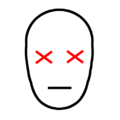 Visualisation of functional vision for a B1 competitor
Visualisation of functional vision for a B1 competitor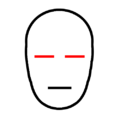 Visualisation of functional vision for a B2 competitor
Visualisation of functional vision for a B2 competitor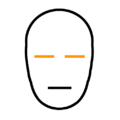 Visualisation of functional vision for a B3 competitor
Visualisation of functional vision for a B3 competitor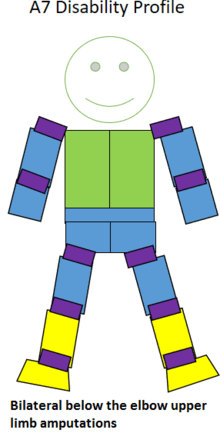 Visualization of an A7 classified bowler competing in LB3
Visualization of an A7 classified bowler competing in LB3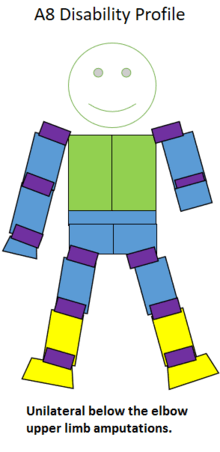 Visualization of an A8 classified bowler competing in LB3
Visualization of an A8 classified bowler competing in LB3
There are a number of different classes in this sport. One class is LB3, which is a standing class. ISOD A7 and A8 are eligible to participate in this class.[4]
History
The visual impairment classification was part of the 1994 Commonwealth Games.[5] Several classes in this sport were included in the 2002 Commonwealth Games.[5]
At the Paralympic Games
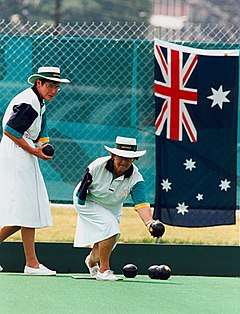
Competitors with cerebral palsy classifications were allowed to compete at the Paralympics for the first time at the 1984 Summer Paralympics.[6] Bowls has dropped at the 1992 Summer Paralympics, returning on 1996 Summer Paralympics, and dropped again in 2000 Summer Paralympics, blind, wheelchair and amputee disability types were eligible to participate, with classification being run through the International Paralympic Committee, with classification being done based on wheelchair and blindness.[7] The sport was not on the Paralympic programme as of 1999.[8]
References
- Robert C. Schenck (1999). Athletic Training and Sports Medicine. Jones & Bartlett Learning. p. 818. ISBN 978-0-89203-172-6. Retrieved 21 August 2012.
- Jan Broekhoff (June 1986). The 1984 Olympic Scientific Congress proceedings: Eugene, Ore., 19-26 July 1984 : (also: OSC proceedings). Human Kinetics Publishers. ISBN 978-0-87322-006-4. Retrieved 21 August 2012.
- Joseph P. Winnick (27 October 2010). Adapted Physical Education and Sport. Human Kinetics. p. 51. ISBN 978-0-7360-8918-0. Retrieved 21 August 2012.
- Consejo Superior de Deportes (2011). Deportistas sin Adjectivos (PDF) (in Spanish). Spain: Consejo Superior de Deportes. Archived from the original (PDF) on 2016-11-04. Retrieved 2016-07-26.
- Nigel Thomas (29 January 2009). Disability Sport: Policy and Society: An Introduction. Taylor & Francis. p. 129. ISBN 978-0-415-37818-5. Retrieved 21 August 2012.
- DePauw, Karen P; Gavron, Susan J (1995). Disability and sport. Champaign, IL: Human Kinetics. p. 85. ISBN 0873228480. OCLC 31710003.
- DePauw, Karen P; Gavron, Susan J (1995). Disability and sport. Champaign, IL: Human Kinetics. p. 128. ISBN 0873228480. OCLC 31710003.
- Ian Brittain (4 August 2009). The Paralympic Games Explained. Taylor & Francis. p. 39. ISBN 978-0-415-47658-4. Retrieved 21 August 2012.